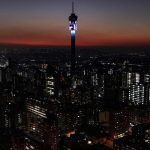background
In California, a large-scale project is to use artificial intelligence for traffic. Elsewhere, tests are already being carried out to see how AI could be used to optimize traffic management.
Drivers in Los Angeles lose around 95 hours a year in traffic jams – that's the result of a study. Lost nerves are not included in this. “It can get really bad, you get stuck,” says passerby Rachel. And Nate adds: “Especially if you want to leave at the wrong time.”
That's why California is now relying on artificial intelligence (AI). The governor of the US state called on tech companies to solve the traffic problem. The companies should “find out where the patterns are, where traffic jams form and then make suggestions on how to solve the problems,” said Amy Tong, Secretary of State for Transportation in California.
Reduce stops at red lights
California is working with five companies to do this. They have six months to develop so-called generative AI tools. These include companies that are supported with technology from OpenAI, Google and Amazon.
Tech giant Google has been developing AI solutions for road traffic for some time now. The research project “Greenlight” is being tested in 14 cities to reduce the number of stops at red lights.
It is being tested in Seattle and Hamburg, among other places, as Birgit Ahlers explains. As a strategy manager, she is responsible for Google Maps, among other things: “Google uses aggregated driving trends from Google Maps, analyzes thousands of intersections, and then uses AI to modulate traffic patterns.” These patterns result in recommendations for optimizing traffic light systems in the respective city.
Fewer traffic jams help the climate
Google is working “with those in the city who really have their finger on the button and can change the traffic light switching times,” says Ahlers.
The idea: More “green waves” means less CO2 because environmentally harmful stop-and-go movements are reduced. This is important because cities are the main cause of emissions. Less traffic jams are therefore also good for the climate. The first results are encouraging: “We were able to eliminate 30 percent of the stops and save 10 percent of emissions,” says Ahlers.
Mixed feelings on the road
However, if you ask around on the street, there are mixed feelings about the topic of artificial intelligence and traffic: “I wouldn't think it would be a good idea if AI directly controlled the traffic lights. I don't think we're ready to hand everything over to AI,” says Angela. And Rachel has a specific wish for an AI solution: “The problem is: too many cars! The focus should be on improving public transport.”
Google has also thought about this. For example, Google Maps users should be encouraged to change their habits and try out other means of transport.
Such recommendations already exist in the USA, and they should soon be introduced in Germany as well, says Birgit Ahlers: “If I use Maps, always drive, and the route is relatively short, then I also get the walking route shown in the car tab. Or information about public transport or cycling.”
Solutions for the 2028 Olympics are needed
In the city of Los Angeles, which has a population of one million, public transport is still the poor choice. Most people use their cars – not least because they get stuck in traffic jams on buses and trains. One solution using AI is to issue tickets – specifically for drivers who block the bus lanes and cause extra waiting times.
For this purpose, AI-controlled cameras have been installed in the buses, says Dave Sotero of LA Metro: “We tell the AI that if a vehicle is parked in a certain place, the license plate can be scanned.” The first time there is a warning, the second time a hefty fine of $250.
Solutions are urgently needed, because the Olympic Games are coming to Los Angeles in 2028 – and by then at the latest, there is a risk of traffic collapse.





